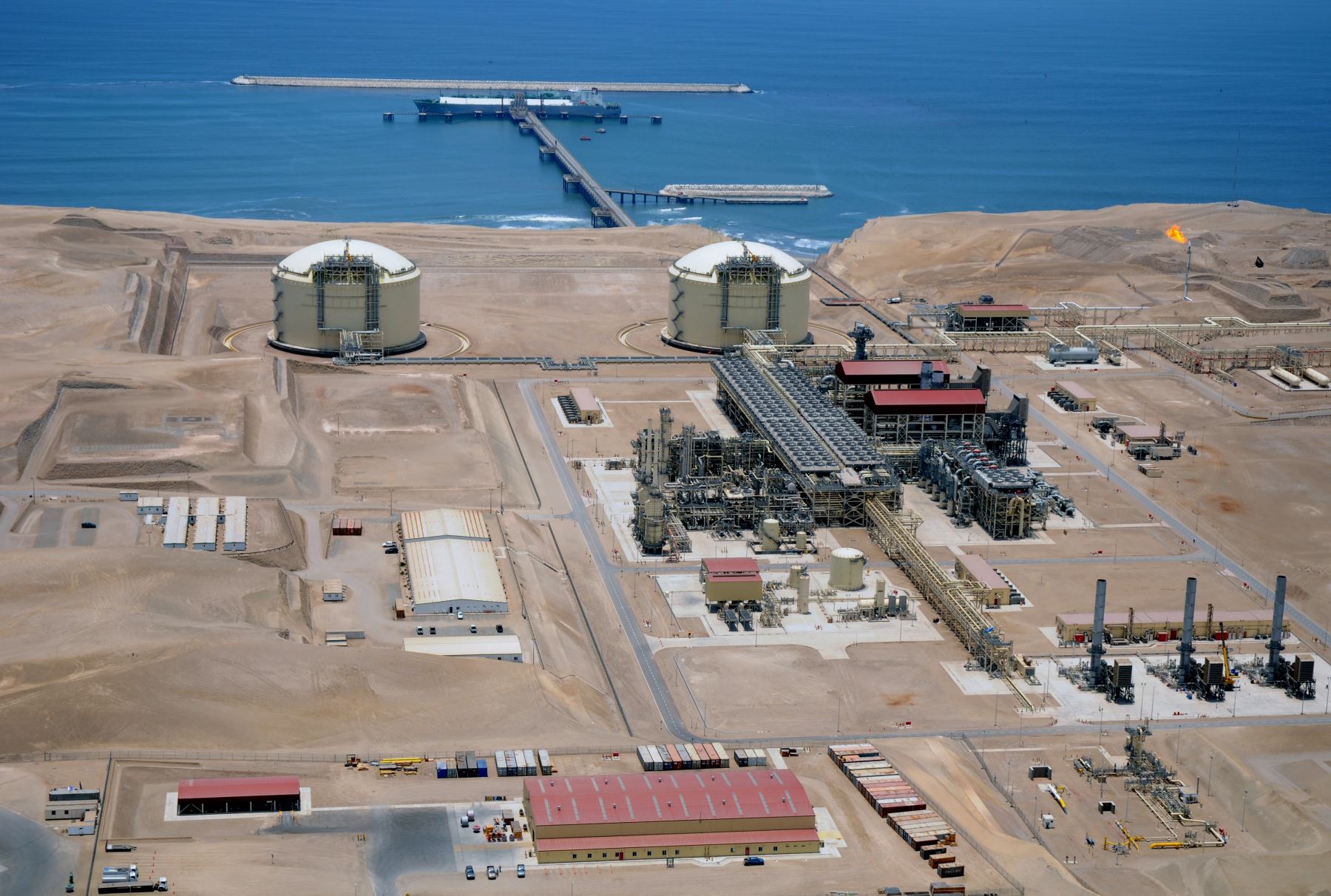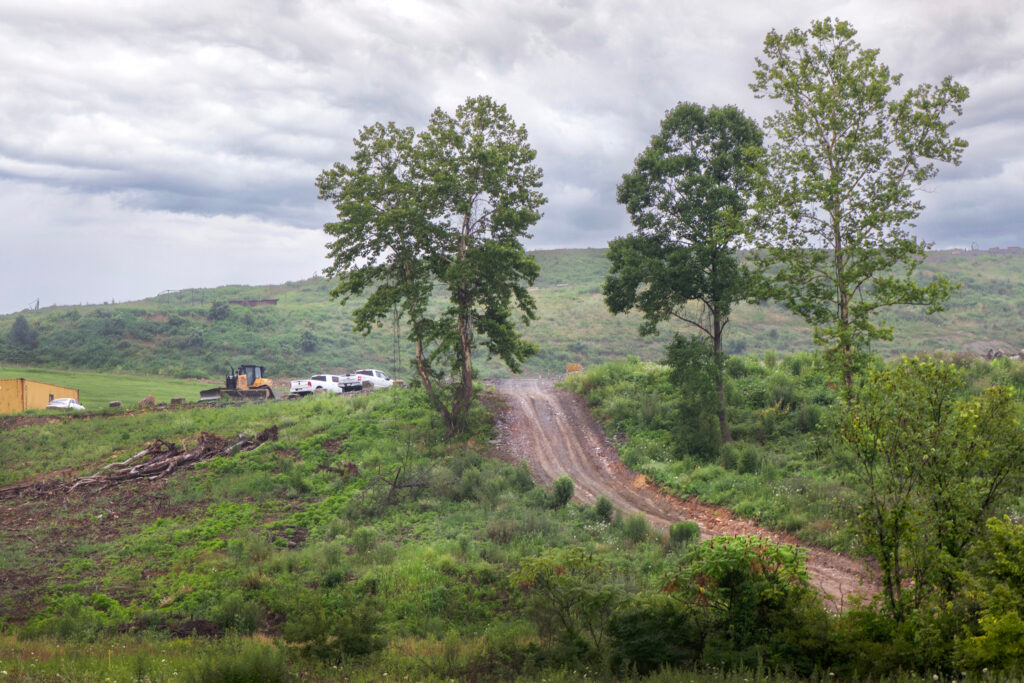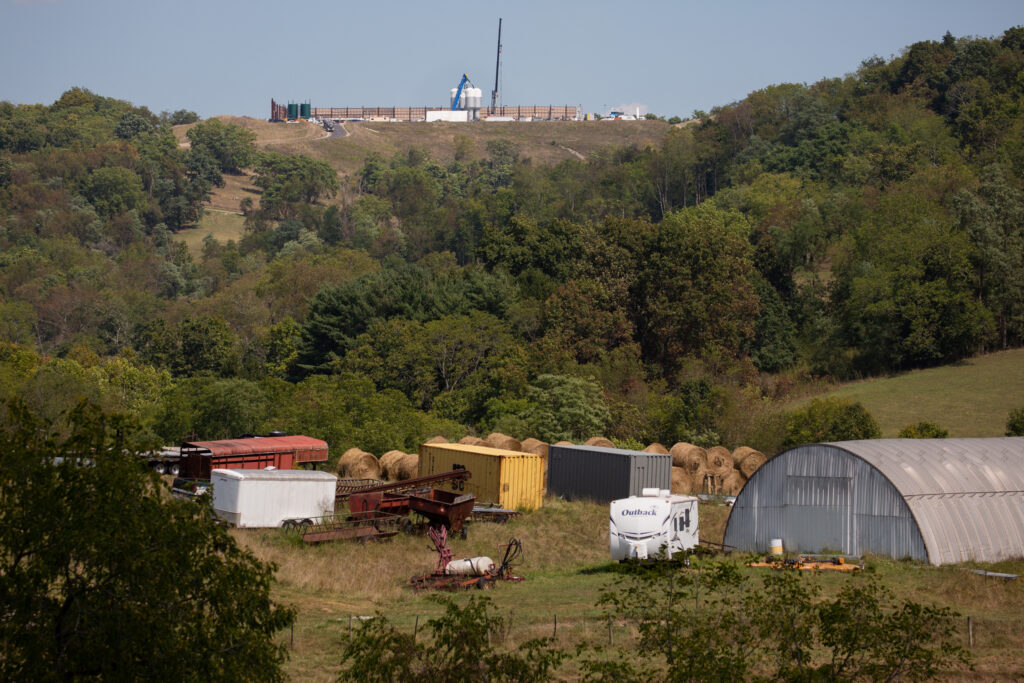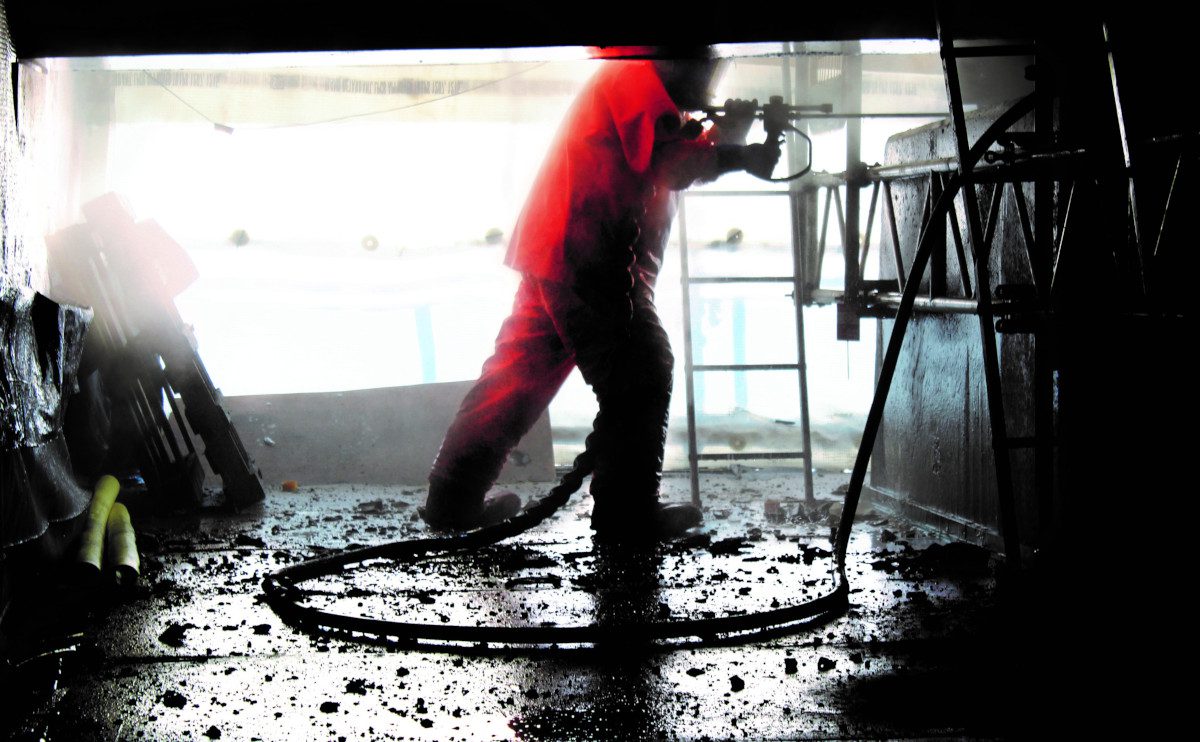On a recent Tuesday evening, several oil workers in Kern County, California, spoke out in support of a project that they hope will create much-needed jobs.
“What I’m hoping to get out of this is hope for my grandson’s generation,” said Allen Miller, a third-generation oilman who came to work in the petroleum-rich region in 1984. “That they can provide for their family the way my grandpa did and the way I did.”

The audience applauded Miller’s comments during a crowded public meeting in Taft, a city of about 8,500, in the heart of the state’s oil country.
The proposed project, known as Carbon TerraVault 1, would store millions of tons of planet-warming carbon a mile beneath the nearby Elk Hills Oil Field. Oil production in that field and others nearby has sustained the county’s economy for over a century.
“This is our oil field,” said Manny Campos, a longtime Taft resident and businessman. “I’m glad to see we are being intentional about keeping it that way and keeping the benefits local.”
Some environmental advocates are skeptical of the carbon removal industry — and its ability to create a significant number of jobs — but California policymakers view carbon removal and storage as a necessary tool to manage greenhouse gas emissions.
The fledgling technology is a key part of the state’s plan to fight climate change, which also includes phasing out oil drilling by 2045. The county and California Resources Corporation (CRC), the oil company hoping to build the TerraVault, see carbon management as a vital new revenue stream. Kern County stands to lose thousands of jobs and millions in tax dollars as drilling declines
But carbon storage facilities themselves are not currently projected to generate large numbers of jobs, according to a report prepared for the county. Kern’s own analysis shows the initial phase of the TerraVault project will only produce five permanent positions.
We’re hiring!
Please take a look at the new openings in our newsroom.
See jobs
To create more jobs, the county unveiled a plan nearly a year ago to attract clean energy industries. That plan, however, has not resulted in any firm commitments from companies.
Lorelei Oviatt, the county’s director of planning and natural resources, helped develop the plan. She sees carbon management as crucial to the county’s survival. In a letter to the Board of Supervisors last year, she wrote that “the state’s policies of driving out oil production” do not address the $80 million the industry contributes to Kern County’s coffers.
Oviatt, whose department is overseeing the environmental review of the TerraVault project, acknowledges the county’s push to embrace carbon management comes with a great deal of uncertainty.
“You’ve heard that analogy of, ‘We’re building the airplane as we fly it,’” Oviatt said in an interview before the public meeting in Taft. “We’re manufacturing the parts as we fly it.”
‘There Is No Data’
CRC has said that the TerraVault would help California meet its climate goals and “promote economic development and bring living-wage jobs to Kern County,” according to a county report. On websites and in press releases promoting the project, the company has emphasized its potential to create “quality union jobs” in construction and technology. The facility now under consideration in Kern County is one of several CRC plans to build across the state.
The construction phase for that project is slated to produce 80 jobs. But the county has determined the TerraVault project will result in five jobs once the facility is operational. “With respect to employment, the project would not induce substantial growth,” the county wrote in its recently-published environmental impact report.
Once the TerraVault is built, it will be largely self-sufficient, according to CRC executives. Engineers will be able to monitor it remotely, from a command center on the oil field. Still, the company argues that the growing industry — which has already drawn in some former petroleum workers — will create more jobs that are relevant to the region’s oil-and-gas workforce.
“I remain very optimistic that we will actually see a very healthy job creation coming from expanding the carbon capture and sequestration business,” said Omar Hayat, the company’s Executive Vice President of Operations.
Several oil companies in addition to CRC are considering building carbon storage facilities in Kern County, but county officials say those plants alone will not result in enough new jobs to offset anticipated losses. Instead, they are pinning their hopes on what they call a “Carbon Management Business Park.” In April, the county’s planning department presented its concept for the park, which included carbon removal and storage, hydrogen production, a steel mill, and a research and development incubator.
The business park could “directly and indirectly support 13,500 to 22,000 permanent jobs” throughout the county, according to a consulting firm hired by Kern County. Most of those jobs — more than 11,000 — would likely come from “ancillary clean energy industries,” which are not defined in the consultants’ report or on the county website. By comparison, the petroleum industry currently employs about 16,000 people in Kern County.
Kern County has not received any firm offers to invest, despite its efforts to promote its vision for the park. And it’s unclear how many jobs may materialize, or when, in part because some of the projects the county hopes to bring to the park have not been built at the scale it envisions.
“There is no data,” said Oviatt. “We are in a brand new world.”


The number of jobs that could be created is “all really speculation at this point,” said Michelle Ghafar, a senior attorney with the environmental legal advocacy group Earthjustice. The organization, which has represented community groups in a lawsuit over Kern County’s permitting of oil and gas wells, believes the county should be investing in creating jobs in industries like renewable energy, rather than finding ways to maintain its longstanding ties with oil and gas producers. Ghafar is skeptical that promised jobs will materialize, and says potential job creation should not override environmental concerns associated with the project.
“They’re using each project to justify other projects in the hope that somehow, long-term, this will lead to a ton of jobs,” she said.
‘Killing Our Way of Life’
As the sun set outside on a cool January night, patrons trickled into The Bank, a sports bar in Taft.Many of them work in the surrounding oil and gas fields.
Taft, one of the state’s last remaining oil towns, is a 40-minute drive west of Bakersfield, the largest city in Kern County. Along the ride, lush fruit and nut orchards slowly give way to barren oil fields, a jarring transition that highlights Kern County’s two most important industries.
“We have agriculture and we have oil. If we don’t have [them], we’re not going to have anything,” said Ronnie Veach, a 43-year-old oil worker, perched on a barstool at The Bank, which he owns. “This town’s going to dry up and be nothing.”
New state-imposed restrictions on agricultural water use could threaten the revenue that farming generates. And while California’s drilling phaseout sets a 2045 deadline, a state appeals court last year blocked the county from issuing new permits pending a lawsuit over its environmental review process. The court is expected to issue its ruling in the case in the next few months.
Meanwhile, the oil industry in Kern County is cutting costs and consolidating. Earlier this month, CRC announced a merger with Aera Energy, a deal the company said was valued at $2.1 billion dollars. Last year, each company cut jobs, laying off about 160 workers between them.
“They’re killing our way of life,” Veach said of state lawmakers who support California’s plans to end drilling. Fossil fuels helped Veach underwrite his version of the American dream. He recently purchased the bar using money saved during his 25-year career as an oilfield operator. He’s done this without a college degree, a path unthinkable to many California workers today.
Veach and many of the bar’s customers still work in the oil fields. If those jobs disappear, “we’d have to pick up and leave,” Veach says of his hometown. “I got a high school education, there’s nothing here [where] I’m going to be able to make this kind of money and support my family.”
Veach doubts his would be the only family to leave if the pumps are turned off.
Jobs With Benefits
Hoping to avoid a repeat of economic downturns to some U.S. mining towns in the wake of the coal industry’s collapse, politicians at all levels of government have touted green-energy jobs as viable options for displaced oil and gas workers. But Veach and others wonder about the quality of these jobs and whether there will be enough of them to replace all of those lost in Kern County’s oil fields.
“When you have hundreds and thousands of oilfield workers competing for the same jobs, what kind of quality of pay are they gonna have?” he asked. “Are they gonna have benefits like we do in the oil field? Are they gonna have retirement?”
Veach’s concerns are hardly theoretical.


A 2023 study from the University of California Berkeley Labor Center found the majority of unionized oil workers laid off from a refinery in Northern California in 2020 were able to find new work — mostly in the petroleum industry — after the facility suddenly shuttered, but took pay cuts amounting to nearly a quarter of their previous salaries. Only 43 percent of their new jobs were unionized.
Kern County has already lost oil jobs, but Virginia Park, one of the report’s authors and a University of California Irvine professor and director of its Labor Center, said the county has an advantage in that it knows climate policies will cause change.
“As long as we know that decarbonisation is coming,” she said, “we have the opportunity to then plan for transitioning these workers out of fossil fuel jobs and into other jobs.”
Kern County has demonstrated it can attract climate-friendly industries. It’s home to more renewable energy installations than any other county in California. Solar installers and wind turbine service technicians are among the fastest growing occupations in the county, but in 2028 the state expects fewer than 800 people to hold those jobs.
And in some cases, working in the oil fields pays more.
In Bakersfield, solar installers can earn an annual average of roughly $50,000, according to data from California’s Employment Development Department. Wind turbine technicians make an average of about $69,000. Wellhead pumpers, a role that doesn’t require a college degree, can earn $137,000. Oil and gas roustabouts and pump operators earn less, an average of about $66,000 and $58,000 per year, respectively.
Oviatt says that renewable energy projects alone will not generate the job growth the county needs. But she believes carbon storage and other industries like hydrogen production will create more and higher-paying opportunities for workers leaving oil and gas. And she’s confident the county can lure those jobs to Kern County,
“We believe that we can attract those kinds of industries,” she said, “just like we did for solar and wind.”
Finding Work in Clean Energy
Still, some research suggests that many petroleum workers will face a serious challenge finding work in clean energy and climate-focused industries.
In a 2023 paper analyzing future job locations and prospects for the fossil fuel workforce, researchers found that fewer than 5 percent of oil and gas workers in Bakersfield would find jobs in “green industries,” including carbon capture and storage, over the next decade.
The city will likely add many jobs in solar energy during that time, but not enough to absorb all of the petroleum industry workers who could lose them, according to Morgan Frank, a professor of informatics and networked systems at the University of Pittsburgh and one of the paper’s authors.
Frank and his colleagues note there is uncertainty in estimating where clean energy jobs may be created. The Inflation Reduction Act, which could create 9 million jobs in climate and environment-focused industries, is still in the early phases of implementation. And efforts to attract these industries to regions where petroleum industry workers live, as Kern County hopes to do, may help more fossil fuel workers find new work.
“There’s a demand for workers right now, to do some very specific work. Once that work is complete, though, the demand will start to diminish.”
Because there are relatively few carbon removal projects up and running worldwide and just two operational facilities permanently storing carbon in the U.S., reliable employment data for the industry, including salary information, is not available.
But already there are indications that carbon management facilities do not require large numbers of people to operate them. An independent research firm, Rhodium Group, estimates that the vast majority of jobs carbon removal projects create will be in construction, rather than permanent positions in those facilities. The oil company Occidental (CRC’s former parent company) expects that the removal project it is building in Texas, called Stratos, will employ 1,000 people during construction and 75 people once operational.
Frank thinks most carbon removal jobs will be only temporary and related to constructing the facilities. “There’s a demand for workers right now, to do some very specific work. Once that work is complete, though, the demand will start to diminish,” he said.
A Seat at the Table
Faced with an uncertain future, Norman Rogers, a refinery worker in Carson, CA, decided to take matters into his own hands. He joined California Labor for Climate Jobs, a coalition of unions with the goal of bringing worker voices into rooms where the state’s green-energy policies are drafted.
“Ideally, there’s some worker leadership in what happens moving forward as opposed to a bunch of decisions just being made, and we’re stuck with it,” he said.
He described the group’s approach simply: “If you’re not at the table, you’re on the menu.” How effectively workers have elbowed their way into those discussions remains to be seen, but there are some positive signs, Rogers says. Last year, the legislature approved $40 million to create a Displaced Oil and Gas Workers Fund to support workers in transitioning to sectors that match their skills and offer similar wages.
This story is funded by readers like you.
Our nonprofit newsroom provides award-winning climate coverage free of charge and advertising. We rely on donations from readers like you to keep going. Please donate now to support our work.
Donate Now
Earlier this month, Kern County received about $11 million from the program to launch a retraining and resource program for up to 800 displaced workers. The county’s proposal was one of four to receive the grant funding, and its award was the largest. The pilot program could be a model for other communities hit hard by the transition to renewable energy
The program could help laid-off oil workers launch a wide range of new careers, from construction and plumbing to nursing and law enforcement. It would also pay for childcare during retraining as well as potential relocation costs if workers choose to move, according to Aaron Ellis, a workforce development officer with the county.
But finding jobs that match the salaries for longtime oilfield workers remains a challenge, Ellis said.
“If you’ve got a long-term oil or gas employee, they’re making high wages. And if they only have a high-school diploma, then that’s going to be very hard to get them to that high wage,” he explained, adding that retraining programs could help workers “get on track” in careers where higher earnings are possible, such as building trades.
Ellis said displaced oil workers could also be hired to seal abandoned and leaky oil wells across the county and state, though it’s unclear how big the demand for such jobs will be.
One industry absent from the retraining programs is carbon management.
“I just don’t know when those jobs are coming,” Ellis said. “I want to help folks with the jobs we currently have right now. That’s what I have to focus on.”
Rogers, the refinery worker, says he appreciates the state’s investment, but is quick to point out that retraining programs mean established workers with decades of experience under their belts would likely have to start over from the bottom. Workforce investment programs alone, he says, won’t solve the key issue that worries the more than 4,000 members of the California Labor for Climate Jobs coalition.
“Ultimately, this is going to end up with people getting training,” he said. “But what really, really needs to happen is that there’s jobs.”
This story is part of a series, After Oil: California’s Big Bet, which examines the impact of the state’s decision to phase out oil drilling on its largest oil-producing county. This project is a collaboration between KVPR, Inside Climate News, Investigative Editing Corps, and Report for America.

















